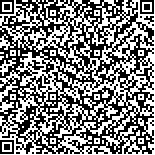| 摘要: |
| 【目的】分析奶牛场水冲粪 固液分离系统在不同季节的氨排放特征及影响因素,为明确该系统的工艺改进方向和环境影响的定量评估提供依据。【方法】于2017-2018年,按季节(春季、夏季、秋季和冬季)在采用水冲粪 固液分离系统的奶牛场采集固液分离后的废水和粪渣,采用通气法测定废水和粪渣在贮存和堆积过程的氨排放速率,分析废水和粪渣及整个固液分离系统氨排放的季节变化特征。【结果】废水温度(-4.1~35 ℃)主要受气温影响,且与气温差异不明显,其变化存在显著的季节差异;而粪渣堆体温度(5.0~63 ℃)主要受堆体有机质降解程度的影响,与气温有明显差异,不同季节的粪渣在堆积前中期无明显的季节差异。废水贮存过程中pH呈波动变化,但长期处于8.0 左右,而堆积过程粪渣pH总体呈下降趋势。废水贮存过程中,氨排放速率主要受气温和废水pH影响,春季、夏季和秋季氨的排放高峰期分别集中于贮存中后期、前中期和前期,冬季无明显的排放高峰期;随着贮存时间推移,废水氨累积排放量呈增加趋势,至试验结束时(49 d),NH3累积排放量从高到低依次为夏季(177.24 mg/kg)、春季(168.13 mg/kg)、秋季(162.00 mg/kg)和冬季(144.93 mg/kg)。粪渣堆积过程中,氨排放速率受粪渣堆体温度、pH和翻堆频率的叠加影响。随着贮存时间推移,氨累积排放量呈增加趋势,至试验结束时(49 d),春季、夏季、秋季和冬季的NH3累积排放量分别为0.36,0.42,0.54,0.67 g/kg,与气温无直接关系。废水是水冲粪 固液分离系统氨排放的主要来源,占整个系统氨排放量的58%~83%。【结论】对于奶牛场水冲粪 固液分离系统而言,控制废水的氨排放,尤其是夏季废水贮存过程的氨排放是奶牛场减少粪污氨排放的关键环节,降低废水的pH可以显著降低废水贮存过程的氨排放。 |
| 关键词: 水冲粪 固液分离系统 氨排放 累积排放量 季节变化特征 奶牛场 |
| DOI: |
| 分类号: |
| 基金项目:国家自然科学基金项目(41201588);陕西省自然科学基金项目(2018JM4034) |
|
| Seasonal characteristics of ammonia emissions from flush-manure and solid-liquid separation system in a dairy farm |
|
CUI Lili,WANG Xiaoqin,DUAN Xueqin,et al
|
| Abstract: |
| 【Objective】To determine technical improvement directions and provide data for evaluating environmental impacts of a flush-manure and solid-liquid separation system,the amount and characteristics of ammonia emission and impacting factors were investigated.【Method】Wastewater and fecal residue separated from a flush-manure and solid-liquid separation system in a dairy farm were collected in four seasons from 2017 to 2018.The aeration method was used to determine ammonia emission rates when wastewater and the fecal residue were stored in dairy farms.Variations of cumulative emission of ammonia from wastewater and fecal residue were analyzed during storage in different seasons,and the main influencing factors were discussed.The contributions of wastewater and the fecal residue to total emission of the whole system were also evaluated.【Result】The temperature of wastewater (-4.1-35 ℃) was mainly affected by air temperature with significant difference among seasons and insignificant differences with air temperature.The temperature of fecal residue pile (5.0-63 ℃)was mainly affected by degradation degree of organic matter in the pile without significant difference with air temperature.There was no significant seasonal difference between fecal slag in different seasons before and in the middle of pile.The pH of wastewater fluctuated around 8.0 during storage process,while pH of fecal residue showed decreasing trend.The ammonia emission rate of wastewater was influenced by air temperature and pH of wastewater,and the peak periods of ammonia emission in spring,summer and autumn were concentrated in the middle and late storage period,early and middle storage period and early storage period,respectively.There was no peak period in winter.The cumulative emissions of wastewater increased with the extent of storage time.At the end of experiment (49 d),the emission rates were 177.24,168.13,162.00 and 144.93 mg/kg in summer,spring,autumn and winter,respectively.The ammonia emission rate of fecal residue was influenced by temperature,pH of fecal residue stack and turning frequency.The cumulative emissions increased with the extent of storage time.At the end of experiment (49 d),the emissions were 0.36,0.42,0.54 and 0.67 g/kg in spring,summer,autumn and winter,respectively.Wastewater was the main source of ammonia emission from a flush manure and solid liquid separation system,contributing 58%-83% to the total emission.【Conclusion】For the flush-manure and solid-liquid separation system,wastewater should be controlled to reduce ammonia emissions and decreasing pH is the most effective method. |
| Key words: flush manure solid-liquid separation systems emission of ammonia cumulative emission of ammonia seasonal characteristics dairy farm |


